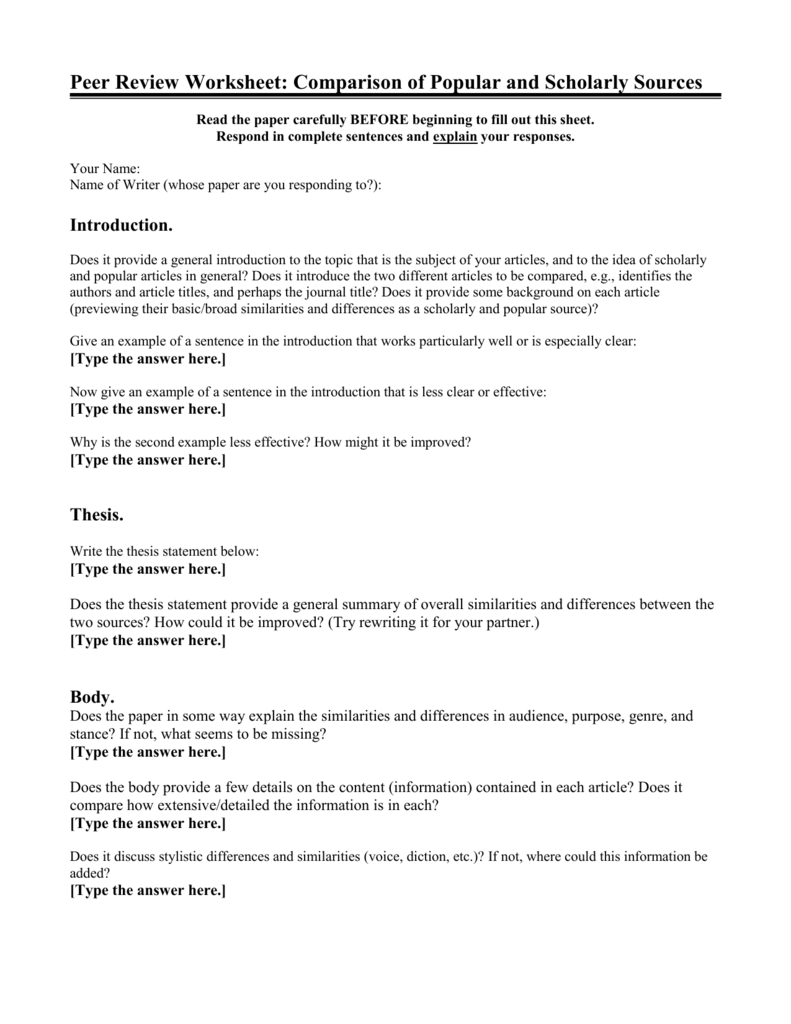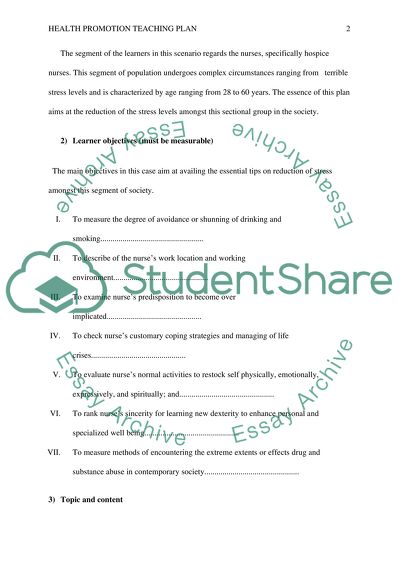· Summarizing a journal article is the process of presenting a focused overview of a completed research study that is published in a peer-reviewed, scholarly source. A journal article summary provides potential readers with a short descriptive commentary, giving them some insight into the article's 89%() EXAMPLE RESEARCH SUMMARY. Danielle Wilson. Psych Section Tuesday Thursday PM. Ms. Trich Kremer. Student ID Number You will be writing a summary of a PEER REVIEWED research article. Instructor’s name Time/Day the class meets Class and Section Your Name Please read all of these boxes to make sure you are following blogger.com Size: KB Summary of the research and your overall impression. In your own words, summarize what the manuscript claims to report. This shows the editor how you interpreted the manuscript and will highlight any major differences in perspective between you and the other reviewers. Check out the peer review examples at F Research to see how other
Sample Summarize Peer Reviewed Articles Free Essays
Last Updated: August 30, References Approved. This article was co-authored by Jamie Korsmo, peer reviewed article summary example, PhD. Jamie Korsmo is a Ph. candidate in English at Georgia State University. wikiHow marks an article as reader-approved once it receives enough positive feedback. This article has been viewed 1, times. Summarizing a journal article is the process of presenting a focused overview of a completed research study that is published in a peer-reviewed, scholarly source.
A journal article summary provides potential readers with a short descriptive commentary, giving them some insight into the article's focus. Writing and summarizing a journal article is a common task for college students and research assistants alike.
With a little practice, you can learn to read the article effectively with an eye for summary, plan a successful summary, and write it to completion. To summarize a journal article, peer reviewed article summary example, start by reading the author's abstract, which tells you the main argument of the article. Next, read the article carefully, peer reviewed article summary example, highlighting portions, identifying key vocabulary, and taking notes as you go.
In your summary, define the research question, indicate the methodology used, and focus mostly on the results of the research. Use your notes to help you stay focused on the main argument and always keep your tone objective—avoid using personal pronouns and drawing your own conclusions. For tips on how to read through the journal article thoroughly, such as starting with the conclusion, keep reading!
Did this summary help you? Yes No. Log in Social login does not work in incognito and private browsers. Please log in with your username or email to continue. wikiHow Account. No account yet? Create an account. Community Dashboard Write an Article Request a Peer reviewed article summary example Article More Ideas Edit this Article.
Courses New Tech Help New Expert Videos About wikiHow Pro Upgrade Sign In, peer reviewed article summary example. Home Random Browse Articles Courses New About wikiHow Easy Ways to Help Approve Questions Fix Spelling Quiz App More Things to Try We use cookies to make wikiHow great. By using our site, you agree to our cookie policy. Cookie Settings. wikiHow is where trusted research and expert knowledge come together. Learn why people trust wikiHow.
Categories Education and Communications College University and Postgraduate Academic Writing Academic Journals How to Summarize a Journal Article. Download Article Explore this Article parts. Sample Summaries. Related Articles. Article Summary. Co-authored by Jamie Korsmo, PhD Last Updated: August 30, References Approved.
Part 1 of Read the abstract, peer reviewed article summary example. Abstracts are short paragraphs written by the author to summarize research articles.
Abstracts are usually included in most academic journals and are generally no more than words. The abstract provides a short summary of the content of the journal article, providing you with important highlights of the research study. The purpose of an abstract is to allow researchers to quickly scan a journal and see if specific research articles are applicable to the work they are doing.
If you're collecting research on immune system responses in rodents, you'll be able to know in words not only whether or not the research is in your field, but whether the conclusions back up your own findings, or differ from it. Remember that an abstract and an article summary are two different things, so an article summary that looks just like the abstract is a poor summary.
Understand the context of the research. Make sure you know what specifically the authors will be discussing or analyzing, why the research or the topic matters, whether or not the article is written in response to another article on the topic, etc. By doing this, you'll learn what arguments, quotes, and data to pick out and analyze in your summary. Skip to the conclusion. Skip ahead to the conclusion and find out where the proposed research ends up to learn more about the topic and to understand where the complicated outlines and arguments will be leading.
It's much easier to comprehend the information if you read the researchers' conclusions first. You still need to go back and actually read the article after coming to the conclusion, but only if the research is still applicable, peer reviewed article summary example.
If you're collecting research, you may not need to digest another source that backs up your own if you're looking for some dissenting opinions. Identify the main argument or position of the article.
To avoid having to read through the whole thing twice to remind yourself of the main idea, make sure you get it right the first time. Take notes as you read and highlight or underline main ideas. Pay special attention to the beginning paragraph or two of the article.
This is where the author will most likely peer reviewed article summary example out their thesis for the entire article. Figure out what the thesis is and determine the main argument or idea that the author or authors are trying to prove with the research. Look for words like hypothesis, results, typically, generally, or clearly to give you hints about which sentence is the thesis.
Underline, highlight, or rewrite the main argument of the research in the margins. Keep yourself focused on this main point, so you'll be able to connect the rest of the article back to that idea and see how it works together.
In the humanities, it's sometimes more difficult to get a clear and concise thesis for an article because they are often about complex, abstract ideas like class in post-modern poetics, or feminist film, for example. If it's unclear, try to articulate it for yourself, as best as you can understand the author's ideas and what they're attempting to prove with their analysis.
Scan the argument. Continue reading through the various segments of the journal article, highlighting main points discussed by the authors. Focus on peer reviewed article summary example concepts and ideas that have been proposed, trying to connect them back to that main idea the authors have put forward in the beginning of the article.
Different peer reviewed article summary example of focus within a journal article will usually be marked with sub-section titles that target a specific step or development during the course of the research study. The titles for these sub-sections are usually bold and in a larger font than the remaining text.
Keep in mind that academic journals are often dry reading. Is it absolutely peer reviewed article summary example to read through the author's word proof of the formulas used in the glycerine solution fed to the frogs in the research study?
Maybe, but probably not. It's usually not essential to read research articles word-for-word, as long as you're picking out the main idea, and why the content is there in the first place. Take notes while you read. Efficiency is key when you're doing research and collecting information from academic journals. Read actively peer reviewed article summary example you comb through the material. Circle or highlight each individual portion of the journal article, focusing on peer reviewed article summary example sub-section titles.
Part 2 of Write down a brief description of the research. In a quick free write, describe the academic journey of the article, listing the steps taken from starting point to concluding results, describing methodology and the form of the study undertaken.
There is no need to be too specific; that's what the actual summary will be for. When you're first getting started, it's helpful to turn your filter off and just quickly write out what you remember from the article. These will help you discover the main points necessary to summarize. Decide what aspects of the article are most important.
You might refer to these as the main supporting ideas, or sections, of the article. While these may be marked clearly with subheadings, they may require more work to uncover. Anything that's a major point used to support the main argument of the author needs to be present in the summary.
Depending on the research, you may want to describe the theoretical background of the research, or the assumptions of the researchers. In scientific writing, it's important to clearly summarize the hypotheses the researchers outlined before undertaking the research, as well as the procedures used in following through with the project. Summarize briefly any statistical results and include a rudimentary interpretation of the data for your summary.
In humanities articles, peer reviewed article summary example, it's usually good to summarize the fundamental assumptions and the school of thought from which the author comes, as well as the examples and the ideas presented throughout the article. Identify key vocabulary to use in the summary.
Make sure all the major keywords that are used in the article make it into your summary. It's important that you fully examine the meanings of these more complicated terms so that your summary reader can grasp the content as you move forward with the summary.
Any words or terms that the author coins need to be included and discussed in your summary. Aim to keep it brief. Journal summaries don't need to be anywhere close to the length of the articles themselves.
The purpose of the summary is to provide a condensed but separate description of the research, either for use for the primary research collector, or to help you redigest the information at a later date in the research process. As a general rule of thumb, you can probably make one paragraph per main point, ending up with no more than words, for most academic articles.
Tips for writing journal article summaries
, time: 14:00Writing a journal article summary sample

Summary of the research and your overall impression. In your own words, summarize what the manuscript claims to report. This shows the editor how you interpreted the manuscript and will highlight any major differences in perspective between you and the other reviewers. Check out the peer review examples at F Research to see how other We have previously discussed peer review generally (Why do the rules and conventions of academic publishing keep changing and how can researchers stay current?) and how authors can effectively respond to peer review (Writing effective response letters to reviewers: Tips and a template). This article will cover the other side: being a reviewer · Selecting an article from a peer- reviewed or academic journal: Make sure your subject is approved by your instructor. If your instructor wants a “research” article, make sure that your article has the 4 main components of a research article: introduction, methods, results and discussion (or something very similar to those)

No comments:
Post a Comment